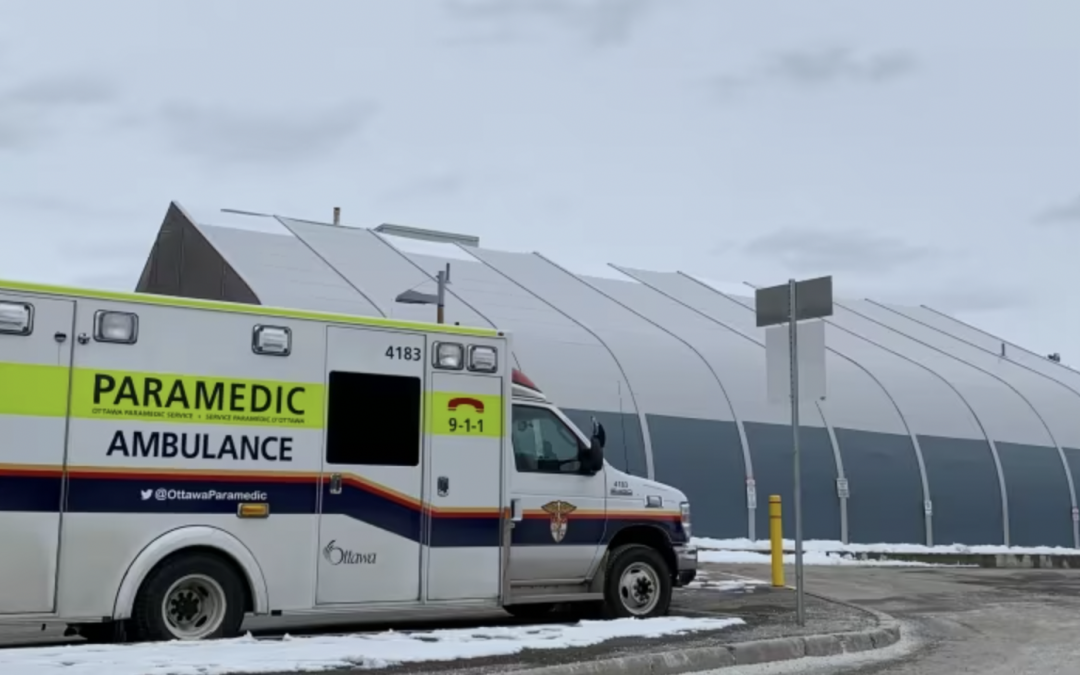Canada’s healthcare system, once a source of national pride, is now facing critical challenges that have led many to view it as “unwell” or “sick.” Access to healthcare services has become a pressing concern, sparking a call for change and revitalization. The 911 Emergency System was initially designed as a means to manage emergencies and transport patients to hospitals, but the role of paramedics has evolved significantly over the past 40 years. Today, paramedics are at the forefront of providing patient-centered care, necessitating a paradigm shift towards comprehensive and accessible healthcare. This article explores the pressing need for change, the evolving role of paramedics, and the importance of collaboration between healthcare professionals in reshaping the Canadian healthcare landscape.
The Access Challenge
Accessible healthcare is a fundamental right, yet many Canadians face obstacles in obtaining timely medical services, consultations with specialists, and essential treatments. Prolonged wait times for non-emergent procedures have fueled frustration and dissatisfaction among patients, contributing to the perception of an ailing healthcare system. The struggle to attain adequate access demands immediate attention and transformative solutions.
The 911 System’s Evolution and Paramedic Empowerment
Initially established to respond to emergencies and facilitate patient transportation, the 911 emergency system has progressed beyond its initial scope. Modern paramedics are highly trained medical professionals equipped not only for transportation but also to assess, triage, and deliver fundamental medical interventions on the spot. Their expanded skill set and expertise have led to a patient-centered approach to care, improved patient outcomes, and ensuring that Canadians are receiving the right health care.
Paramedics as Frontline Care Providers
In the contemporary healthcare landscape, paramedics have transcended their traditional role as mere responders; they have evolved into frontline care providers with the capacity to administer medications, execute advanced medical procedures, and deliver life-saving interventions even prior to hospital admission. Moreover, recognizing the inherent difficulty for Canadians to discern life-threatening emergencies, paramedics have honed their expertise in triage. This proactive approach has spurred the development of strategic pathways, ensuring that every 911 call receives the appropriate care from the most suitable healthcare resource. This multifaceted expansion of responsibilities not only elevates the quality of patient care but also directly confronts the challenges posed by overburdened emergency departments.
The Shift towards Comprehensive Care
Revitalizing Canada’s healthcare system demands a shift from reactive emergency management to proactive comprehensive care. This transformation entails empowering paramedics and healthcare providers to deliver robust care at the community level. Expanding paramedic scope of practice enables a more holistic approach to patient needs and reduces strain on hospitals.
Supporting Paramedics: Training and Resources
To facilitate the transition towards comprehensive care, paramedics require advanced training, adequate resources, and ongoing support. Comprehensive training programs that encompass a wide range of medical skills empower paramedics to provide a higher level of care, bridging the gap between emergency response and hospital treatment. Access to cutting-edge medical technologies and resources further equips paramedics to engage patients in making informed decisions and therefore deliver timely interventions, ultimately elevating patient outcomes.
Integration and Collaboration
Efforts to transform Canada’s healthcare system necessitate collaboration among various stakeholders, including paramedics, primary care providers, specialists, and hospitals. By working in synergy, these entities can establish a seamless continuum of care that minimizes delays and enhances overall healthcare quality. Integrating paramedics into this collaborative framework fosters a comprehensive approach that meets the diverse needs of patients.
Empowering Paramedics: Changing the Physician-Paramedic Relationship
Canada’s healthcare transformation also hinges on the evolving relationship between physicians and paramedics. Paramedic self-regulation is gaining traction in multiple provinces, signifying a move towards greater professional autonomy. This shift, coupled with paramedic integration into the broader health system, is redefining traditional partnerships between paramedics, Emergency Medical Services (EMS), medical directors, and other health professionals.(1,2)
The Anglo-American model of paramedicine, encompassing Professionally Autonomous and Directive Systems, underscores this shift.(3) Professionally Autonomous Systems integrate paramedics into the broader health system with support from higher education paramedic degree programs. Led by paramedic or health-based administrators, these systems prioritize self-led paramedic clinical governance over traditional medical direction.
Directive Systems, on the other hand, involve physician oversight and delegation of paramedic activities. These systems heavily rely on medical protocols, physician consultation, and high patient conveyance rates.
Most Canadian paramedicine systems exhibit elements of both models, falling along the continuum between them. Despite this, challenges remain in fully realizing a Professionally Autonomous paramedic model due to limited opportunities for higher education paramedic degree programs and regulatory constraints.
Strategic Reconciliation and Collaboration
The divergence between these models has created tensions between medical director paradigms and paramedics aiming to advance their profession. Bridging this gap requires a strategic approach, encompassing stronger educational structures, self-regulation legislation, and a redefinition of the prehospital and transport medicine physician role.(3,4)
Prehospital and transport medicine physicians play a pivotal role in advancing the paramedic profession and enhancing paramedic-led clinical governance. Collaborative partnerships in blended model EMS Systems showcase the potential of physician-paramedic collaboration, from dyad leadership to paramedic-led protocol development, on-line medical consultation, pre-hospital research, and the transition of physician-initiated programs to paramedic-led governance.
Furthermore, collaboration with physicians outside the EMS System is essential for innovative pre-hospital treatments, transport strategies, and safe non-conveyance pathways. Building connections with primary care, palliative care physicians, and other healthcare professionals enriches patient care and underscores the importance of inter-professional collaboration.
Operational Challenges and Innovations
Operational practices such as ambulance diversion impact paramedic-physician relationships and patient care. Collaborative alternatives, like partnered ambulance destination determination systems, offer solutions to challenges like overcrowding and off-load delays, fostering a more harmonious paramedic-physician relationship.
Advancing the Paramedic Profession: The Road Ahead
Strengthening partnerships with physician scientists, research-based institutions, and developing research capacity within EMS and paramedic systems are vital steps in advancing the paramedic profession. While significant progress has been made, barriers remain. Paramedics are increasingly pursuing research-related education and leading initiatives that inform practice, but further efforts are necessary to universalize these practices across Canada.
Conclusion
In essence, while Canada’s health system may exhibit signs of distress, it remains fundamentally salvageable. The concerns voiced by Canadians regarding access have served as a blaring call for transformative reforms. The evolution of the 911 emergency system and the expanded roles of paramedics provide a roadmap towards a healthier future, prominently guided by collaborative physician-paramedic partnerships that stand at the vanguard of this metamorphosis. As we address the system’s ailments through a triad of comprehensive care, seamless integration, and robust collaboration, Canada has the potential to resurge as a trailblazer in global healthcare leadership.
Through the assimilation of innovative governance models and the bolstering of paramedic education, the healthcare system can undergo a renaissance that enables it to cater effectively to the diverse needs of all citizens. Strengthened partnerships, both within and beyond the healthcare sector, will fortify the foundations of this revitalization endeavor. Canada’s healthcare narrative, once characterized by perceived shortcomings, can rewrite itself as a narrative of resilience, progress, and a steadfast commitment to the well-being of its people.
References:
- O’Meara P, Wingrove G, McKeage M. Self-regulation and medical direction: Conflicted approaches to monitoring and improving the quality of clinical care in paramedic services. International Journal of Health Governance. 2018;23(3):233-42.
- O’Meara P, Wingrove G, Nolan M. Clinical leadership in paramedic services: a narrative synthesis. International Journal of Health Governance. 2017;22(4):251-68.
- Makrides T, Ross L, Gosling C, Acker J, O’Meara P. The structure and characteristics of Anglo-American paramedic systems in developed countries: A scoping review. In-press. 2021.
- Foerster CR, Tavares W, Virkkunen I, Kamarainen A. A survey of front-line paramedics examining the professional relationship between paramedics and physician medical oversight. CJEM. 2018;20(2):238-46.




Hi Dr. Austin
My name is Richard Powlesland and I am a retired Paramedic. I wrote a book titled ” A Canadian Health Care Blueprint” You might find it interesting. It is available at Amazon, Bookbaby, Barns and Noble and many others, either as an E-Book or a paperback. The paperback came out in Sept. 2023. Thank you for all you do and have a great 2024 new year.